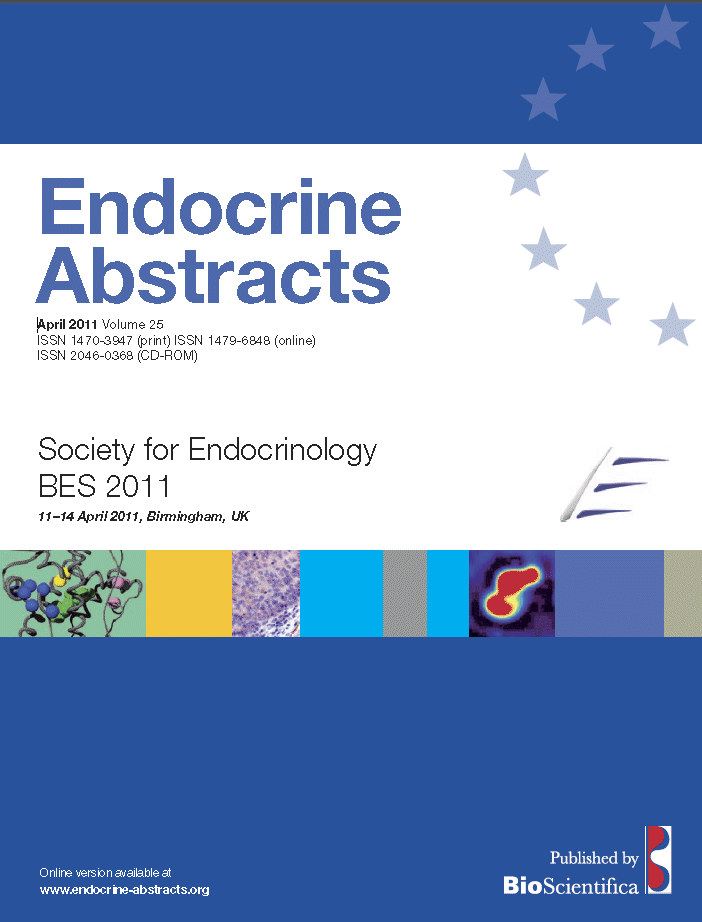Oral Communications
Steroids
ea0025oc2.1 | Steroids | SFEBES2011
Regulation of 11β-hydroxysteroid dehydrogenase type 1 by NF-κB in stromal cells: towards tissue specific enzyme inhibition
Ahasan Mohammad , Jones Chris , Hardy Rowan , Hassan-Smith Zaki , Lavery Gareth , Rabbitt Elizabeth , Buckley Cristopher , Raza Karim , Stewart Paul , Cooper Mark
ea0025oc2.2 | Steroids | SFEBES2011
Anti-inflammatory mechanisms of 5α-reduced glucocorticoids: potential dissociated steroids
Nixon Mark , Yang Chenjing , Rossi Adriano , Walker Brian , Andrew Ruth
ea0025oc2.3 | Steroids | SFEBES2011
APEX1, a novel, negative regulator of aldosterone synthase activity, differentially binds to a single nucleotide polymorphism in the aldosterone synthase gene and represses transcriptional activity both in vitro and in vivo
McManus Frances , Sands William , Fraser Robert , Davies Eleanor , Connell John
ea0025oc2.4 | Steroids | SFEBES2011
Altered miR-125 and miR-134 expression in aldosterone-producing adenoma and post-transcriptional regulation of the CYP11B2 gene
Wood Stacy , Ejaz Ayesha , Livie Craig , MacKenzie Scott , Connell John , Davies Eleanor
ea0025oc2.5 | Steroids | SFEBES2011
A novel entity of isolated adrenal insufficiency caused by partial inactivation of P450 side-chain cleavage (CYP11A1) enzyme
Parajes Silvia , Kamrath Clemens , Rose Ian , Taylor Angela , Mooij Christiaan , Dhir Vivek , Grotzinger Joachim , Arlt Wiebke , Krone Nils
ea0025oc2.6 | Steroids | SFEBES2011
Novel non-steroidal glucocorticoids that dissociate rapid signalling effects from gene transcription
Trebble Peter , Simpson Karen , Matthews Laura , Farrow Stuart , Ray David
ea0025oc2.7 | Steroids | SFEBES2011
Depot specific differences in the sensitivity to glucocorticoid and insulin action in human adipose tissue
Gathercole Laura , Hauton David , Morgan Stuart , Bujalska Iwona , Stewart Paul , Tomlinson Jeremy
ea0025oc2.8 | Steroids | SFEBES2011
Metformin increases in vivo 11β-hydroxysteroid dehydrogenase type 1 activity in euglycaemic obese men
Stimson Roland , Andrew Ruth , Jones Gregory , Livingstone Dawn , Smith Kenneth , Walker Brian




